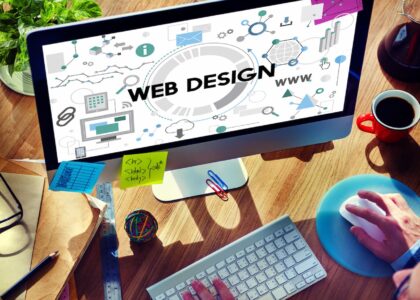The future of web designing practices is an exciting one. With new technologies being constantly released web development, product design are continually evolving. This makes change inevitable, opening up both opportunities and challenges in how web design is done at a company level.
Technologies like Augmented Reality (AR), Virtual Reality (VR), Machine Learning, and Web 3.0 solutions are redefining how web design is practiced. Designers have to think about new ways for users to interact with digital technologies, websites, and web apps while at the same time being present in the real world. Yes, the metaverse and its underlying technologies like VR and AR will actually impact web development and web design.
This might sound like something minor at first. Still, it will most likely have a significant effect on digital products like company websites or apps, their User Experience, and most importantly, how these different elements are aligned with your company goals. For your company, a move away from current technologies and into the metaverse means redefining how web design processes work and how your team operates.
If you want to stay ahead of the curve, every web designer in your team must understand some of the technologies that are changing the landscape and the impact they can have. Additionally, at the organizational level, it is necessary to have a clear conceptual understanding of what the implications are in practical terms. Not doing so can mean lagging in terms of best practices for developing future products.
In this post, we discuss some of the aspects that need to be considered if you want your company to be ready for the future of web design technologies. The future is uncertain, but by looking forward within the context of emerging technologies, you can help prepare your team to build successful future-ready web products.
Understanding the Future of Web Designing Practices
Web design tools are constantly updated with new technologies and features that help web designers create better digital products and experiences. Additionally, innovations like the metaverse also have an impact, not just on business models but also on specific processes. These changes substantially impact the best practices used to build websites, web applications, and other web products.
As a result, entire industries are constantly being redefined. The eCommerce industry, for example, is one where innovative web technologies tend to have a significant impact. A newly implemented technology can change the way something is done, making it easier for users to perform specific tasks, ultimately affecting web development, design processes, and, therefore, business as a whole.
In essence, many of the things web designers do on a daily basis will not change due to the metaverse and other disruptive technologies taking over. A web designer will still have to think about the User Experience, but there will be substantial changes in terms of the how of work.
The Metaverse: Practical Implications for Web Design
Just a few years ago, no one would have imagined that websites would become an essential tool for businesses.
Today, a website is a crucial part of any business that wants to have an online presence and strengthen its brand to reach potential customers and increase its bottom line. This is true not only for eCommerce organizations. It can also be seen in other industries like MedTech, where websites play a key role in attracting and maintaining customers.
A similar phenomenon has happened with web apps. Like websites, they have become critical to the success of many businesses across the globe and various industries. Something like this is expected to happen due to the metaverse and its related technologies, like VR and AR, taking over the business landscape.
Businesses will need to adapt to numerous changes in terms of how users come into contact with their products and services, which means moving beyond just having websites and apps. Apple is an example of a company that is betting hard on Augmented Reality, and this will most likely have significant consequences for companies and users alike.
It is yet to be seen what technological breakthroughs will be adopted and become the new standards of the market. Whatever ends up happening, change is bound to occur. As new technologies are rolled out, web design will continue to evolve, making change inevitable and a key competitive advantage to those who can successfully adapt their web design processes.
Web Design and Technology
Digital products can only be as good as the web design tools used to build them. However, these aren’t the only elements that shape how web designers do their work. Trends like Web 3.0, hardware breakthroughs, and new physical devices will also impact web design processes.
A virtual reality website is probably hard to imagine, but designers will have to learn how to build one if it becomes widely adopted. Years ago, such a website would have been unimaginable. However, as new technologies evolve, we are closer to such websites becoming a reality.
Artificial Intelligence andbMachine Learning will also change how web design is done, although probably not in obvious ways. Unlike a website or a web application, Artificial Intelligence and Machine Learning will most likely influence web design through new tools and features inside website design tools. The algorithmic power they provide can help create new ways of using design tools to build Virtual Reality products.
It might be the case that activities like rendering an image or automating specific time-consuming tasks will be quickly done thanks to the power of Artificial Intelligence. A web designer will be required to be knowledgeable about these tools and how to integrate them within the product development process. Failing to do so will result in poorly built products, a suboptimal User Experience, and deficient business metrics.










